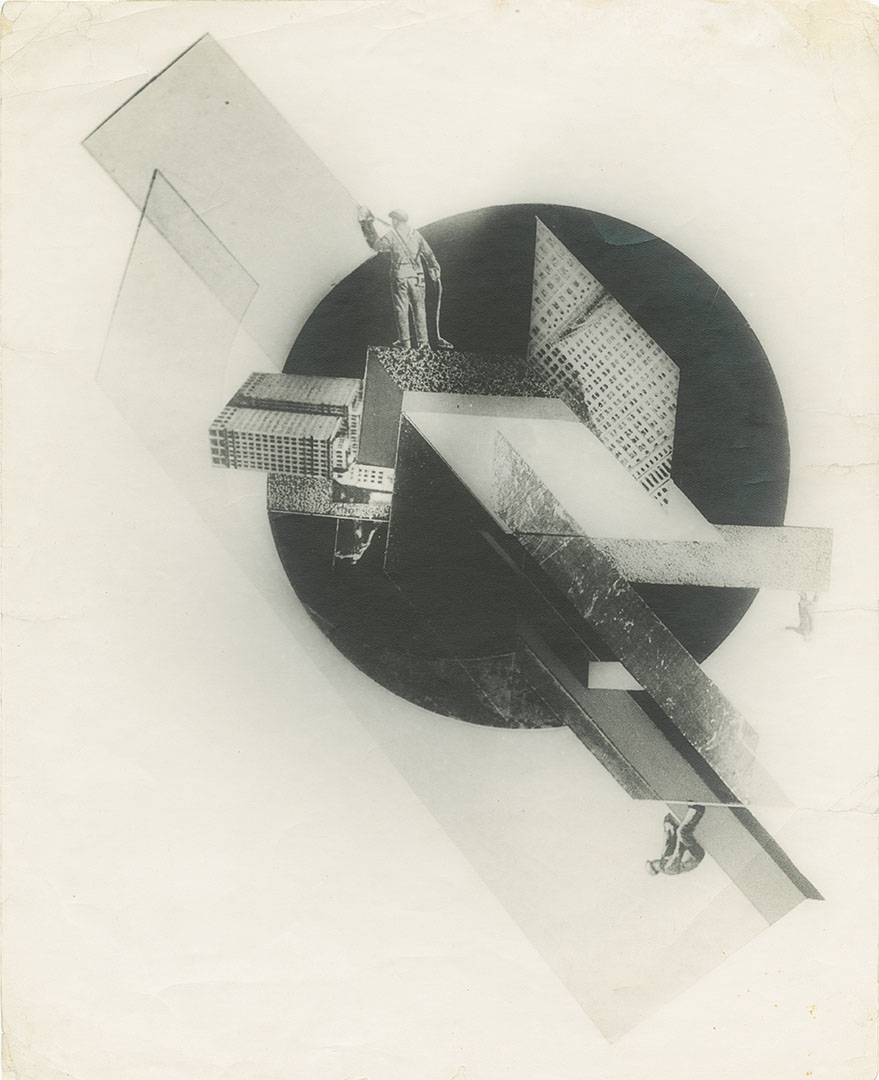EXPERIMENT – LIFE – POLITICS | Bauhaus Photography x Russian Avant-Garde
EXPERIMENT – LIFE – POLITICS
Bauhaus Photography X Russian Avant-garde
March 2nd – May 14th, 2013
Mit der Ausstellung “EXPERIMENT – LIFE – POLITICS” präsentiert die Galerie Priska Pasquer Fotografien aus der Zeit zwischen den beiden Weltkriegen, die als eine der bedeutendsten in der Entwicklung der Fotografie gilt. Während in Deutschland Bauhaus-Künstler vor allem Ende der 20er Jahre die Fotografie unter dem Schlagwort des „Neuen Sehens“ als Experimentierfeld nutzten, wurde das Medium in Russland zum Ausdruck politscher Veränderungen und gesellschaftlicher Idealvorstellungen.
Gezeigt werden Fotografien und Fotocollagen aus den Jahren 1919 bis 1939, unter anderem von T. Lux Feininger, Grit Kallin-Fischer, Alexander Rodchenko, Gustav Klutsis und Valentina Kulagina.
In der Umbruchszeit nach dem Ersten Weltkrieg experimentierten Künstler mit einer neuen Formensprache, die das zeitgemäße Verlangen nach einer gesellschaftlichen Neudefinition widerspiegelten. Die drastischen soziopolitischen Veränderungen, die durch den Untergang der Monarchien und den revolutionären Bestrebungen ausgelöst wurden, führten zu einer neuen kollektiven Wahrnehmung der Realität. Diese konnte durch das von vielen Zeitgenossen als demokratisch definierte Medium der Fotografie, das sich technisch zu einem dynamischen Bildaufzeichnungsgerät entwickelt hatte, dokumentiert werden. Alexander Rodchenko zum Beispiel nutzte die Kamera, um den in der Ausstellung gezeigten “Puschkin-Platz” aus einer ungewöhnlich schrägen Vogelperspektive abzulichten.
Die enge Verbindung zwischen öffentlichem Ausdruck und privatem Lebensweg demonstrieren die ausgestellten Werke des Künstlerpaars Gustav Klutsis und Valentina Kulagina, das sich der Entwicklung der Propagandakunst verschrieben hatte. Gustav Klutsis, der 1935 sein Manuskript “Das Recht auf ein Experiment” im selben Jahr begann, in dem Walter Benjamin seinen bekannten Aufsatz “Das Kunstwerk im Zeitalter seiner technischen Reproduzierbarkeit” schrieb, nutzte neben extremen Perspektiven die Fotomontage, um soziopolitische Ziele der Öffentlichkeit näherzubringen.
Auch in den Werken seiner Lebensgefährtin Valentina Kulagina kommen dieselben Verfahrensweisen zum Einsatz. Dass die politische Dimension der Fotografien von Klutsis-Kulagina nicht zuletzt auf ihrem privaten Lebensweg fußten, verdeutlichen Bilder wie Klutsis’ “Selbstporträt”, in dem sich der Künstler als konzentrierter Dokumentarist seiner Zeit präsentiert.
In den Anfangsjahren des Bauhaus nahm die Fotografie vornehmlich die Rolle als ein dienendes Medium ein, das vor allem dazu genutzt wurde, die am Bauhaus entstandenen Arbeiten zu dokumentieren. Schüler wie Erich Consemüller fotografierten zum Beispiel ihre Vorkursarbeiten. Unter dem Einfluss des Bauhaus-Lehrers Laszlo Moholy-Nagy blühte um 1927 die Fotografie bei Bauhausschülern auf. Sie begannen mit dem Medium zu experimentieren und nahmen dabei Einflüsse des von Moholy-Nagy propagierten „Neuen Sehens“ als auch solche von den verschiedenen Avantgarde-Strömungen wie Surrealismus und Konstruktivismus auf. Die Ausstellung zeigt z. B. eine abstrakte Objektstudie von Piet Zwart von 1931, Inszenierungen menschlicher Rollenspiele von T. Lux Feininger mit extremen Licht- und Schattenspielen oder Porträts von Grit Kallin-Fischer, die aus ungewöhnlichen Perspektiven Momente des tiefen Nachsinnens und der Konzentration zeigen.
With the exhibition EXPERIMENT – LIFE – POLITICS, Galerie Priska Pasquer presents photographs from the period between the two world wars, which is regarded as a key development phase for photography. While Bauhaus artists in Germany were using photography primarily in the late 1920s as an experimental field under the catchphrase of the “New Vision”, the medium in Russia evolved to become an expression of political changes and social ideals.
The exhibition will feature photographs and photo collages from the years 1919 to 1939 among others by T. Lux Feininger, Grit Kallin-Fischer, Alexander Rodchenko, Gustav Klutsis and Valentina Kulagina.
During the tumultuous years that followed the First World War, artists experimented with new forms of expression that echoed the contemporary desire to redefine society. The dramatic social-political upheaval that was triggered by declining monarchies and rising revolutionary movements led to a new collective perception of reality. Artists found that it was possible to document these events using photography, which many contemporaries defined as a democratic medium, and which had technologically advanced to become a dynamic tool for recording images. Alexander Rodchenko, for instance, used his camera to photograph “Pushkin Square” from an unusually oblique bird’s-eye perspective, as can be seen in the exhibition.
The close connection between public expression and private lives is demonstrated by the exhibited works of the artistic couple Gustav Klutsis and Valentina Kulagina, who had devoted themselves to the development of propaganda art. Klutsis, who began working on the manuscript for his book “The Right for an Experiment” in 1935, the same year in which Walter Benjamin wrote his famous essay “The Work of Art in the Age of Mechanical Reproduction”, used extreme perspectives along with photomontage to convey his social-political objectives to the general public.
The same approach can also be found in the works of his wife, Valentina Kulagina. Images such as Klutsis’ “Self-portrait”, in which the artist presents himself as a dedicated documentarian of his day and age, demonstrate that the political dimension of the photographs of Klutsis-Kulagina was also rooted in their private lives.
In the early Bauhaus years, photography was primarily employed as a medium to document designs that had been created at the school. Students such as Erich Consemueller, for example, took photos of their preliminary course work. In 1927, under the influence of Bauhaus teacher Laszlo Moholy-Nagy, photography blossomed among the students. They began to experiment with the medium, incorporating the influences of the New Vision propagated by Moholy-Nagy, along with diverse avant-garde movements such as Surrealism and Constructivism. The exhibition includes an abstract design study by Piet Zwart from 1931, interpretations of human role plays by T. Lux Feininger with extreme interplays of light and shadow, and portraits by Grit Kallin-Fischer that show moments of deep contemplation and concentration viewed from unusual angles.



